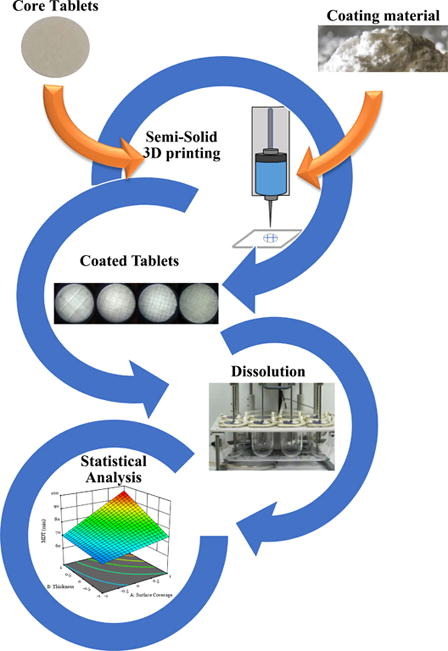Partial Tablet Coating by 3D Printing

In the last decade 3D printing (3DP) technology has gained increasing interest in the pharmaceutical field addressing several novel challenges such as on-demand manufacturing at the point of need, customization of drug release profiles and patient-specific solutions as well as combinations of several APIs in one dosage form.
Therefore, 3DP can become a new and promising path to drug product development and manufacturing, able to support specific therapies and improve compliance, safety and effectiveness. The aim of this work was to partially coat tablets with a glyceride, namely Precirol ATO 5 using a semi-solids 3D printer as an approach for tuning the release of two Active Pharmaceutical Ingredients (APIs), the hydrophilic methyl-levodopa hydrochloride (Melevodopa) and the lipophilic Acyclovir. Various parameters of the 3DP coating process were purposefully modified using experimental design techniques in order to customize the selected APIs release profile, without affecting the core composition of the formulation.
The percentage of the tablet surface coated, the number of coating layers as well as the coated sides of the tablet where the parameters which controlled the release profile for both APIs. Different dissolution profiles have been achieved by tuning these simple parameters, which revealed a non-Fickian release mechanism regardless of the API.
Article Information: Eleni Tsintavi, Dimitrios M. Rekkas, Ruggero Bettini; International Journal of Pharmaceutics, 2020.

